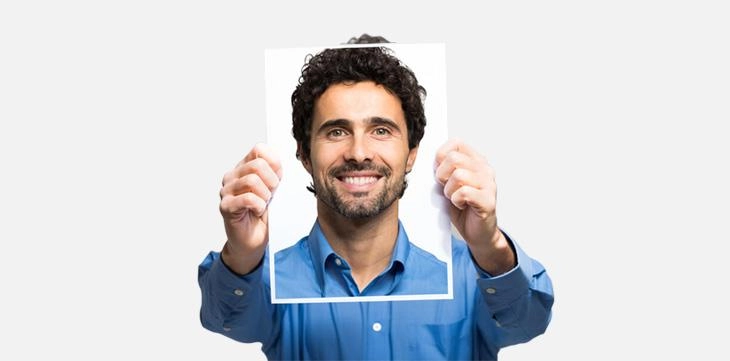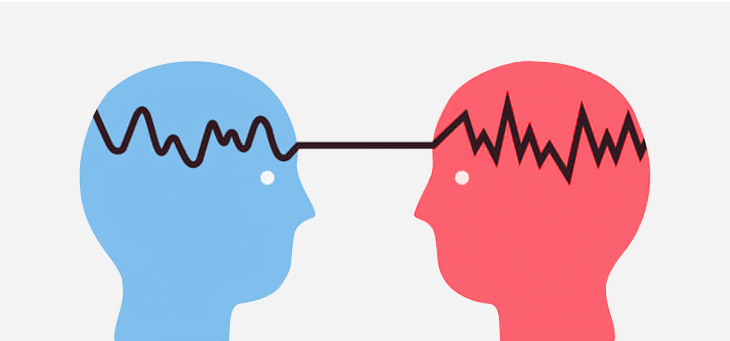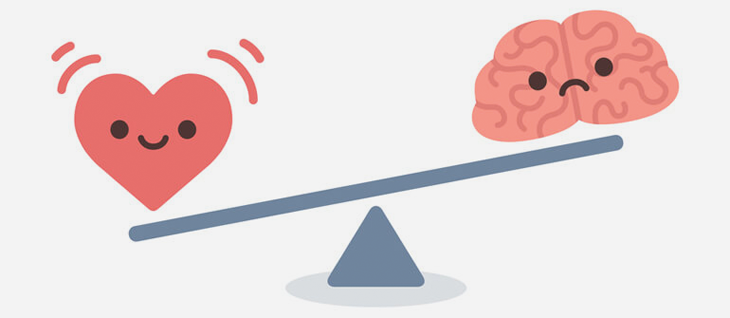Neuromarketing For Social Media Communication!
In this article, we will proceed on the axis of social media and neuromarketing, taking into account the psychological motivations of the consumer.

Thus, we will examine the reasons behind this success of successful social media accounts from a scientific point of view.
Before we get into social media and neuromarketing, let's briefly touch on a few points. Let's make a small introduction for those who do not have enough knowledge about neuromarketing.
Neuromarketing is a branch of research that measures the emotions and experiences of consumers and finds their counterparts in the brain. It is in great demand as it enables brands to understand consumers with scientific data. The usage areas of neuromarketing are increasing day by day.
Let's take a brief look at social media. Social media is a collection of channels that present the digital reflections of the people we see in daily life. For this reason, it is very important to understand the minds of consumers to be successful in social media studies.
The most important difference between social media and real life is this. People have the chance to present themselves and their lives by shining on social media.

This leads to this. When people look at each other's lives, they get feelings like "What does he live, what do I live". They start to compete their lives with these polished lives they see on social media. Somehow, everyone does this.
FOMO: Fear of Missing Out

These 'I wish' feelings that we get from the lives of others have a definition today: FOMO, 'fear of missing out', is the fear of missing out.
These 'if only's, which are often acquired without even realizing it, create various emotional motivations in the mind. As a result, users make some consumption. It can be buying a product or liking an account. Or it could be that a teenager hangs a Ferrari poster on the wall of his room that he can't buy. (Ferrari's example is from Associate Professor Kaan Varnalı.)
The effect of these motivations on consumer behavior coincides with the academic truths of marketing communication. If it wasn't for the overlap, brands probably wouldn't have such a big impact on people. In today's world where competition is intense, brands have to create an 'if only' feeling in consumers and/or offer a solution to eliminating this 'if only'. The phenomena in social media provide us with these feelings of wish. At the same time, they create role models for how we can be in consumption.

Following the phenomena is an ordinary routine for today's people. In this way, we follow the agenda, travel, and cook. We are interested in fashion, we see what we missed and we feel up-to-date thanks to them.
How do these effects of social media occur in our brains?
Every emotion and motivation has a counterpart in our brain. Some of these have modelable effects. For example, the Mirror Neuron. The mirror neuron is one of the brain's survival mechanisms. It is also known as an imitative neuron. We can unconsciously perform the behavior of a person who is itching or yawning in an environment.

The sense of empathy with the mirror neuron influences our liking for people who look like us. For this reason, we follow the people we want to be or the people who make our wishes come true. The mirror neuron generally affects us in everything. This neuron is located in the reward region of the limbic system in the brain. When the desire points called Nucleus Accumbens in the brain are activated, users' desire to consume is triggered.
Let's take an excerpt from Ekşi Sözlük about Nucleus Accumbens:
“It is the reward center of the limbic system. It is the quivering brain region of the dolphin that catches the fish after faking it, of the cat whose jowl is stroked after making two cuties, of the businessman who is handed over with a check during the delivery of the job, of the young man who heads the woman he has been trying to do for a long time, of the believer who draws the rosary at the end of the prayer and reads the Ayet-El Kürsi.”
The effect of the mirror neuron on social media
Right and wrong are actually hidden in small details! The lives of influencers in social media, the consumption of role models, trigger points in the brains of users that they are not even aware of. In this way, the 'if only' we mentioned earlier emerges.
The success of many phenomenon accounts lies in the fact that they appeal to the right emotions in our brains. We are curious, we want to see the future, we want to perceive it, we love gossip.

However, we do not see them in the accounts of many brands. We do not encounter real faces that will give us the emotions we seek. We can't find stories, experiences, and messages of the type that would trigger users' mirror neurons. As such, these accounts do not function. Not working! It is ineffective.
On the other hand, we have the opportunity to closely examine the faces and lives of these people in the accounts of the phenomena. From these accounts, we can mirror where they traveled, what they ate yesterday, what they wore today, and even how we can dress as an example tomorrow. These data provide users with a sense of learning and satisfaction.
An influencer is using a product of a brand. And that week, that product suddenly runs out on the shelves. Look at the effect! This is the mirror neuron!
Social media is very powerful, yes powerful but when used correctly!
This is exactly why it is wrong for brands or agencies to use stock photos instead of producing real content. Therefore, a negative perception is formed in the followers. A message written on a stock photo doesn't motivate anyone. Nobody wants to see this unreal person or message. Naturally, interaction hits rock bottom. Then let the unfollows come to the place of follow.
However, stock photos can also work in the right hands. But in the wrong hands, it harms the brand. Bad use of stock photos creates a sense of falsity. If there is no overlap in the design with the brand and there is no perception that the visual is original, the work turns into garbage. Digital marketing advertising is aware of all this.
While we are on visual issues, let's take a look at the effect of the visual. The importance of the quality of the image and the effect of the text in Facebook social media ads is obvious. For this reason, it has been limiting the text on the advertisement images for a long time. Otherwise, the ad will not be successful. So Facebook can't make money. This is why ads must be successful.
Facebook recently launched its neuromarketing research department! Thus, he now understands which types of visuals make a better impact. In this way, it will guide the agencies for better work. Digital marketing advertising models will undoubtedly be affected by this change.

One of the reasons why images are more effective than texts is that the Visual Cortex part of the brain is highly developed. The visual cortex, one of the defense mechanisms of the brain, transmits an event you see to the primitive brain before you can make sense of it logically. This allows you to react.
For example, your brain perceives and reacts before you can tell whether a branch falling from a tree is a branch or a snake. Likewise, visually effective logo design images produce beneficial results for brands.

The time to view images on social media is even less than scroll!
The time to look at the content on social media is very limited, as in a scroll. Therefore, the selection of images in the context of social media content ideas should be very good. In this way, the right message and emotion reach the user in minimum time.
One of the important points for capturing the user in images is the following. It is necessary to get the effect first, and then direct it to the content. In the context of social media marketing techniques, the user should not be exposed to more than necessary messages in the first place. Because in this case, the cognitive load on the brain increases. This minimizes the user's interest in the content.

This is actually what causes an ad to not be reviewed and a website to be immediately exited!
There are serious temporal differences between perceiving an image in a split second and reading it as a text and making sense of it. The brain has evolved over thousands of years to get to the level where it can quickly make sense of images this way. Humans are visual beings. For this reason, it is necessary to convey the message with effective visuals on social media. Special attention should be paid to this point when implementing social media content development.
I wish we could express this article completely with images. But then our article would not be compliant with Google content quality guidelines. You probably wouldn't be able to access this content because the artificial intelligence couldn't make enough sense by reading the visuals yet.
Marketing Advice for Social Media Users
In the marketing world of the past, the product was scarce and the need was high. Moreover, it was enough to explain the product to the consumer. However, there are many competing products available today. No consumer has the opportunity to reach a single product that meets all their needs. Even if there is such a product, it is not possible to meet the changing needs.
Today, brands that offer those 'if only's that the consumer is not even aware of, and that create the right emotion, take a step forward. Underneath these are the effects of the mirror neuron. You are exemplary. His life affects you and creates an emotion. This feeling is planted in your subconscious. And now your purchase is not for the need for that product, but to meet the emotion you feel lacking.

In the field of social media management, instead of saying "Eat this today, drink this today", it is necessary to spark the emotions that will replace these products.
Do not open a social media account if you are not going to present a 'WHY' to the consumer!
One of the most common mistakes brands make on social media is not giving enough reasons to the audience. There are some basic reasons why we follow many channels today. In today's world where people are trying to avoid advertising, examples of neuro design should give an emotion, a reason.
For this reason, brands like Apple share the emotions created by the product instead of describing the phone features in their advertisements. Or
One of the most common mistakes brands make on social media is not giving enough reasons to the audience. There are some basic reasons why we follow many channels today. In today's world where people are trying to avoid advertising, examples of neuro design should give an emotion, a reason.
For this reason, brands like Apple share the emotions created by the product instead of describing the phone features in their advertisements. Or Coca-Cola is actually selling "happiness" in its beverage ad...
When you open a social media account, you must determine the reason for which it will be followed. The brand or social media agency should follow a professional strategy in this context. You should plan from the beginning what you promise to the target audience and why these people will follow you. You have to correctly evaluate which content will make them happy and have an impact.
Although we started the article as social media and neuromarketing, we had to deal with marketing communication from time to time in order to better handle the subject. We hope this information is useful to you.
is actually selling "happiness" in its beverage ad...
When you open a social media account, you must determine the reason for which it will be followed. The brand or social media agency should follow a professional strategy in this context. You should plan from the beginning what you promise to the target audience and why these people will follow you. You have to correctly evaluate which content will make them happy and have an impact.
Although we started the article as social media and neuromarketing, we had to deal with marketing communication from time to time in order to better handle the subject. We hope this information is useful to you.